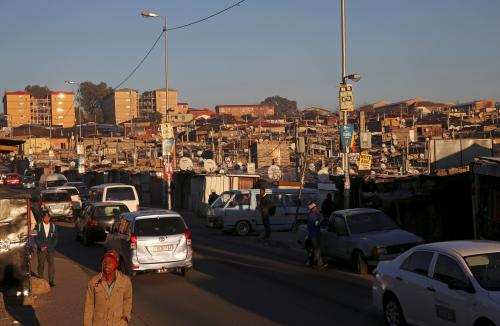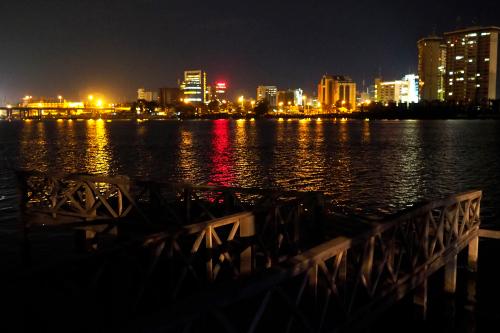From national lockdowns to closed borders, the COVID-19 pandemic has hit cities particularly hard.
Early estimates suggest that municipal authorities around the world will have 15 to 25 percent less revenue following the crisis. The situation for cities in Africa is even worse, with an estimated 30 to 65 percent drop in revenues. All cities are struggling to keep current service delivery levels, particularly small towns dealing with the economic shock, aging infrastructure, and declining populations in some cases. Cities that rely predominantly on one activity, such as tourism, hospitality, transport, or logistics, are particularly vulnerable. Informal economies, the lifeblood of many urban areas in the developing world, have been devastated by lockdowns with few safety nets to soften the blow for the workers.
Six years ago, one of us co-led a report on competitive cities. This study analyzed why some cities are more competitive than their peers functioning under the same national rules, opportunities, and constraints. The report looked at why the top 10 percent of cities—places like Saltillo, Mexico or Onitsha, Nigeria that may not be household names—achieve annual GDP per capita growth that is 8.8 percentage points higher than the average city. That same top cohort achieves 9.2 percent annual jobs growth, compared with 1.9 percent in the remaining 90 percent.
While there was no silver bullet, the report identified some common patterns for becoming a competitive city. These cities used a menu of interventions to increase competitiveness, including institutions and regulations, infrastructure and land, skills and innovation, and enterprise support and finance. Competitive cities developed growth coalitions of public and private stakeholders. Finally, competitive cities are good at turning strategies into action. They have an explicit economic development-oriented mindset that complements a social and environmental vision. They rallied everybody around a shared vision.
Would these approaches be effective in the new COVID-19 world? We went back to some of the most competitive cities identified in the report to see how (and what!) they are doing today.
Competitive cities are using their growth coalitions to weather the crisis. Public policymakers in cities are actors in a complex web. They can systematically increase their ability to influence by finding and creating allies. The case studies of competitive cities show how to do this. In Coimbatore, India, the municipality turbocharged community-led initiatives to ”break the chain’” of the pandemic. Building coalitions will be the only way out of this crisis. Mayors, the private sector, community leaders, and national government—they all need to move forward in coordinated ways.
Secondary cities and towns can be nimbler in times of crisis. In France, the industrial town of Poissy decided to take the initiative to open vaccination centers instead of waiting for regional authorities. Gaziantep, Turkey, already a big host for Syrian refugees, helped deliver medical supplies and treatments to northwest Syria while responding with social, economic, and cultural projects aimed at inclusion and growth. Yokohama, Japan, a city known for reinventing its economic function, immediately decided early on to set up a dedicated office to support small and medium-sized enterprises (SMEs) with special financing schemes. Small towns are investing in sidewalks and bike paths for both recreation and commuting.
Cities are focusing on what they can do well. Competitive cities are disproportionately effective along three dimensions—output, jobs, and growth. A common theme, especially in Africa, has been that long-term job growth is usually driven by the tradable sectors, such as manufacturing. Cities could facilitate job creation and economic growth through various interventions. Given the shrinking fiscal space, however, the emphasis must be on actionable ideas to restore prosperity. Freetown, Sierra Leone, kept informal workers busy—unblocking drains, cleaning streets, and managing waste. The municipality of Changsha, China, building on many of the mechanisms identified in the competitive cities case study, stepped up its human capital policies to attract top talent in artificial intelligence, information technology, creative culture, and social protection, alongside coordinated recruitment drives in the poorest areas. Bucaramanga, Colombia, which made early investments in economic diversification building on its strong sense of local identity and cohesion, has weathered the storm well. It continues to develop economic strategies that balance the mobility of workers and consumers with the protection of its citizens.
Predicting the post-pandemic world or reading tea leaves?
Cities, rather than nations, have emerged as hubs of the global economy. But even in pre-pandemic times, not all cities contributed evenly. Only 7 percent of cities accounted for half of all new jobs. These tended to be the largest ones with more than 2 million inhabitants. How will COVID-19 affect the dynamics of competitiveness across cities? Even experts find it difficult to agree. Is this the end of the era of superstar cities and the rise of the rest? Will it still take a village to innovate? At first glance, it seems like tech hubs will be out of business—according to a recent survey, companies say they will relocate to remote locations. Take a closer look, though, and you will see that the largest city is now four times (compared to three times pre-pandemic) more attractive than the next on the list! Proximity—whether within neighborhoods or along urban commercial corridors—still matters.
COVID-19 is the first pandemic of the global urban era. Future pandemics will most likely also be predominantly urban. Creating jobs and growing income in urban areas—quickly—is essential if economies are to recover. The future is uncertain. No one knows what the new post-recovery world will look like. But one thing is clear—a base of competitiveness will be a solid springboard to deal with the uncertainty.
The Brookings Institution is committed to quality, independence, and impact.
We are supported by a diverse array of funders. In line with our values and policies, each Brookings publication represents the sole views of its author(s).









Commentary
Doubling down on city competitiveness for COVID-19 recovery
March 16, 2021